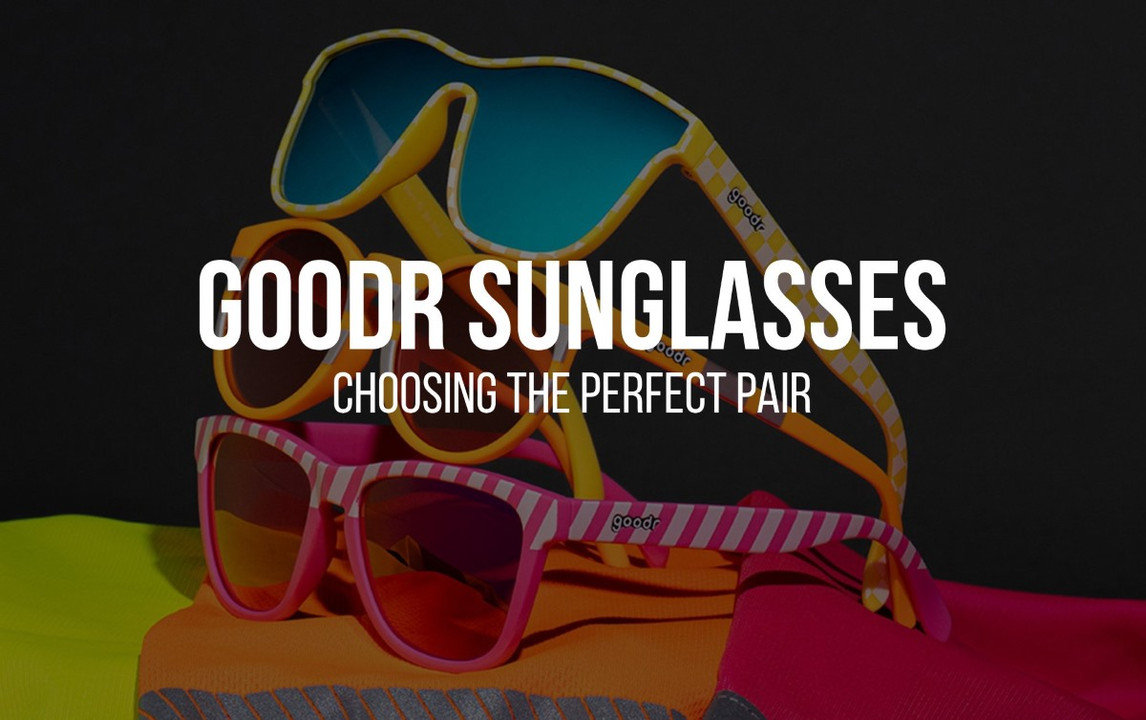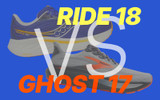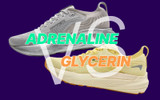goodr sunglasses: Choosing the Perfect Pair
Runners and outdoor fitness enthusiasts know how important good sports sunglasses are. They protect the eyes from harmful UV rays and make the whole experience better. This sounds right, but does everything about protective gear have to be all serious? Goodr is probably the best example of that it does not, demonstrating the perfect mix of fun and functionality in their products. Let's get to know Goodr closer.
What Makes Goodr Unique
In 2015, Goodr came onto the scene with a clear mission: ditch the overpriced, ugly, and over-engineered running sunglasses that make you look like a wannabe astronaut. They wanted to create something that's affordable, stylish, and gets the job done. And they nailed it. Just look at their styles and their prices.
So, why is Goodr so popular? Because they keep things simple, fun, and real. No B.S., just awesome sunglasses.
Technical Stuff: Features and Technologies
So, according to Goodr, their running shades are all about fun, fashion, function, and ‘ffordability. Since we're a running store, not a fashion magazine, we first must pay attention to the performance features.
So, what makes good running sunglasses? UV protection and snug fit. Goodrs have these. And more.
Here’s a closer look at why these sunglasses have garnered a loyal following:
- No Slip: Designed with a special grip coating to eliminate slippage even when you sweat. Some styles also feature silicon nose and temple grips.
- No Bounce: Lightweight frames that stay snug to your face regardless of how much you move.
- Polarized Lenses: Reduces glare, providing clarity and UV400 protection blocking UVA and UVB rays.
- Affordability: High-quality performance without breaking the bank.
Affordability is a whole other topic, but we'd like to elaborate on it here in the techs section. You see, some glasses offer much more than the mentioned features. Take Oakley, for instance. Anti-scratch costings, impact-resistant frames… These features can make Oakley shades last for decades. However, no one will argue that Oakleys are quite an investment, and so are their replacement lenses. Such a level of commitment isn't for everybody. Some runners just want a simpler product that does its job and doesn't cost a fortune. Plus, with proper care, Goodrs can last for years too.
Goodr Knows Style
The way Goodr plays with frame shapes, colors, and model names is truly unique. Every pair screams creativity and fashion. Moreover, the styles are plentiful, so no one is left. You can choose timeless classics in a bright design, like the legendary Flamingos on a Booze Cruise, opt for a circle frame with a double-nose bridge for a hipster appeal, go with aviators, or shine bright like a diamond in cat eye-shaped shades. Everyone will find something that reflects their personality.
Goodr Frames Styles & Sizes
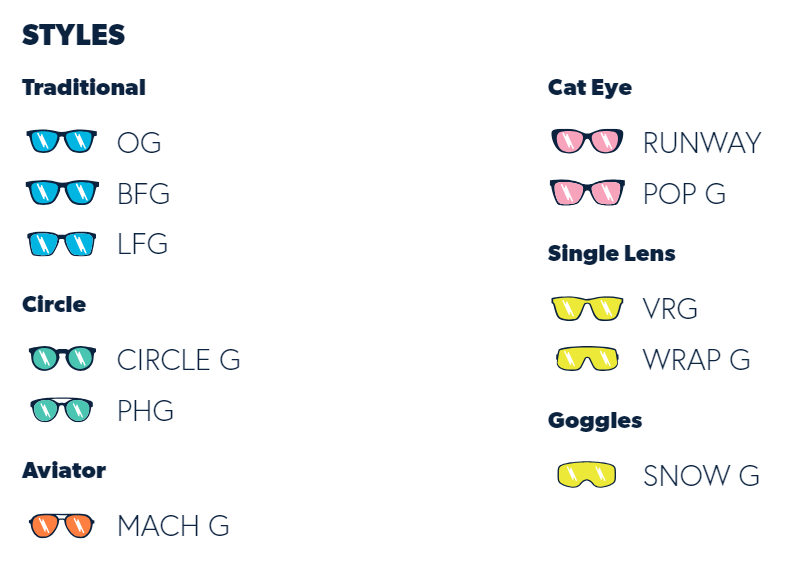
Average head size:
- OG - classic shades
- Circle G - circular frames, fit smaller heads
- PHG - slightly larger circular frames with a double nose bridge
- VRG - one-lens frame
- Runway - cat-eye frame
- Pop G - angular cat-eye frame
Small head sizes:
- LFG - smaller OGS classic frame
Large head size:
- BFG - larger OGS classic frame
- Mach G - aviator shape frame
- Wrap G - extreme wrap style
Goodr Frame & Lens Colors
Goodr's frame and lens color palette is as wild and diverse as a party on a tropical island! You can rock neon green frames with purple lenses, go patriotic with red, white, and blue, or even feel the good vibes with tie-dye patterns. There's literally no color combination they haven't thought of.
As for the lens type of Goodr running sunglasses, there are 3: gradient, reflective, and matte.
Goodr Prices - Good Prices
We've mentioned affordability earlier. Goodr sunglasses typically range from $25 to $35. This affordability, combined with their performance and durability (if you care for them and don't throw them around), makes them a fantastic value for any runner.
Picking the Right Goodr Fit
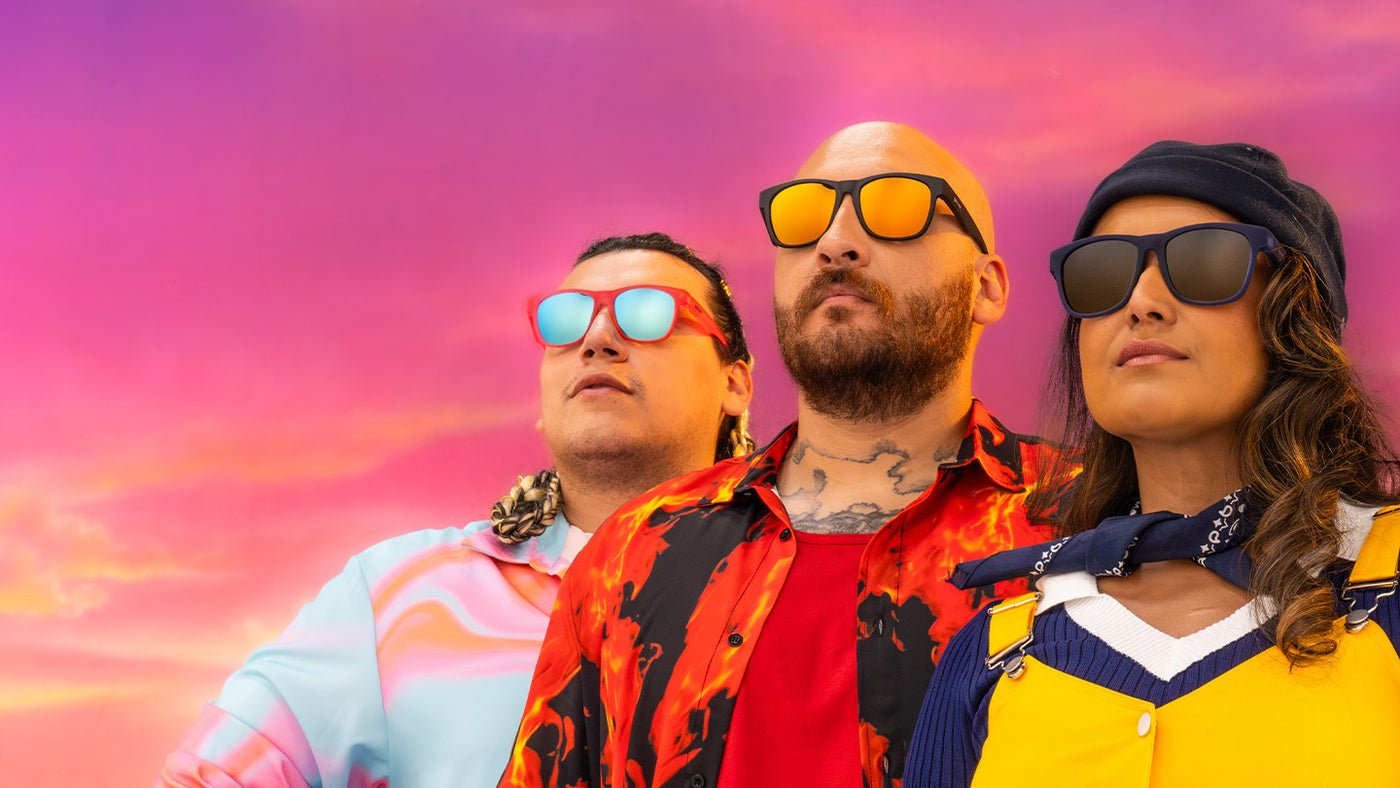
Finding Your Perfect Frame Fit
Alright, let's get down to business. Here's how you can measure your head and find the perfect Goodr sunnies:
- Measure Your Head Circumference: Grab a soft measuring tape and wrap it around your head, just above the ears and across your eyebrows. Note the measurement.
- Determine Head Size: Use your head circumference to figure out your head size. Goodr has frames for small, average, and large head sizes. Match your measurement:
- Small heads: 5.3"-5.7" (135mm-145mm) - Look at the LFG frames.
- Average heads: 5.7"-6.4" (145mm-165mm) - Dive into OG, Circle G, PHG, VRG, Runway, or Pop G.
- Large heads: 6.4"-6.9" (165mm-175mm) - Check out BFG, Mach G, and Wrap G.
Understanding Lens and Frame Dimensions
To dial in that perfect fit, consider these dimensions:
- Lens Width: Measure the width of one lens at the widest part. More coverage means more style points and sun protection!
- Temple Width: Measure from the hinge to where the arm begins to bend around your ears. This ensures comfort and stability.
- Internal Frame Width: Measure the frame's inner width, from one end to the other. Crucial for comfort and no-headache wear.
- Internal Bridge Width: The distance between the two lenses at their closest point. Helps ensure the glasses sit properly on your nose without pinching or sliding.
Picking Lens Tint for Running
Goodr sunglasses lenses are rated 0-4 by how much light gets through, called Visible Light Transmission (VLT). VLT shows the light percentage hitting your eyes, influenced by lens color, thickness, material, and coatings. Here’s a quick guide for picking sunglasses by VLT:
- 3–8% VLT: Ideal for intensely bright, sunny conditions. (Goodr cat. 4: green reflective and blue reflective)
- 8%-18% VLT: Great for bright and sunny conditions. (Goodr cat. 3: chrome reflective, teal reflective, and black non-reflective)
- 18%–43% VLT: Good for all-purpose use in average light. (Goodr cat. 2: pink reflective, rose non-reflective, and orange gradient)
- 43%-80% VLT: Best for overcast and low-light conditions. (Goodr cat. 1: orange non-reflective)
- 80–100% VLT: Virtually clear lenses for very dim and night conditions. (Goodr cat. 0: yellow non-reflective and clear lenses)
Lens colors really come down to preference. Each tint affects how much visible light reaches your eyes, how well you see other colors, and how well you perceive contrasts. Darker shades are a solid choice for sunny outdoor conditions, with gray and green lenses being optimal for minimal color distortion. Yellow, gold, amber, rose, and other lighter colors excel in moderate to low-level light conditions, provide excellent depth perception, enhance contrast in flat-light conditions, improve object visibility, and make surroundings appear brighter.
What About Mirrored Lenses?
Mirrored lenses don't just look cool; they cut down glare too. The reflective coating bounces sunlight away, though it can make things appear darker, so the tint is usually lighter.
Do All Runners Need Polarized Sunglasses?
Glare can distort colors, blur details, and tire your eyes. Prolonged exposure even gives some people headaches, and many say polarized sunglasses are a game-changer. So, what makes polarized sunglasses different?
The magic lies in a thin layer within polarized lenses—a filter absent in non-polarized sunglasses. When vertical light hits a horizontal surface, it creates a harsh glare. Polarized lenses block this glare, letting only vertical light through.
Polarized lenses are especially useful for running, where glare can be particularly hazardous. A minor downside? They can make it tricky to see digital screens like your phone or vehicle dashboard. But for most activities, the benefits are clear.
So, get polarized running sunglasses to reduce eye fatigue, improve visibility, boost contrast, and reduce glare.
Final words
There's no one-size-fits-all in the world of sunglasses because every runner is unique – that’s the beauty of it! With Goodr, you get fantastic options that marry style with performance. Explore RunUnited and pick Goodr sunglasses that reflect who you are.
FAQs
Are Goodr sunglasses suitable for all types of weather conditions?
Yes, Goodr offers a range of sunglasses with varying lens tints and VLT (Visible Light Transmission) ratings to suit different lighting conditions, from bright sunny days to overcast or low-light conditions.
What is the importance of polarized lenses in running sunglasses?
Polarized lenses reduce glare from reflective surfaces like roads and water, providing clearer vision and reducing eye fatigue during runs. This can enhance contrast and overall visibility, making it safer and more comfortable to run.
How do I clean and maintain my Goodr sunglasses?
To clean your lenses, use a microfiber cloth and rinse with lukewarm water if needed. Avoid paper towels or clothing that could scratch the lenses. Store your sunglasses in a protective case when not in use, and keep them away from extreme heat to prevent warping and damage.
EXPLORE POPULAR ARTICLES
-
Run Bright, Stay in Sight: Reflective Gear for Night Running
Dec 10th 2025When winter comes, the days get shorter, and the sun sets before we’re done with our day. If you’re
-
Saucony Ride vs Brooks Ghost: Choosing a Daily Trainer
Dec 3rd 2025In this post, we’re comparing two good daily running shoes - the Saucony Ride 18 and Brooks Ghost 17
-
Adrenaline vs. Glycerin: Comparing Brooks Stability Shoes
Nov 19th 2025Here, we briefly compare two popular Brooks overpronation running shoes - Adrenaline GTS vs Glycerin

